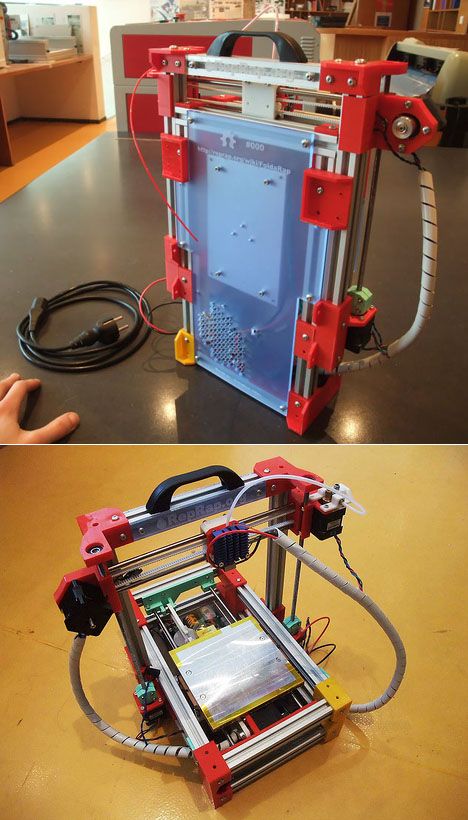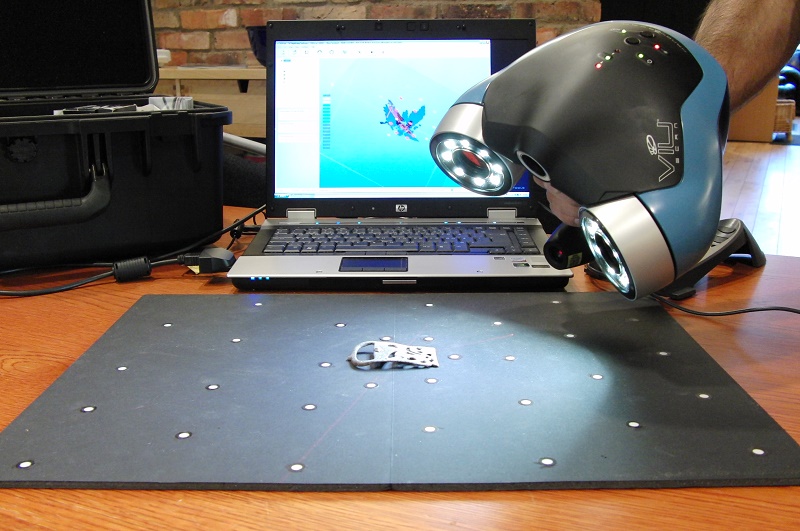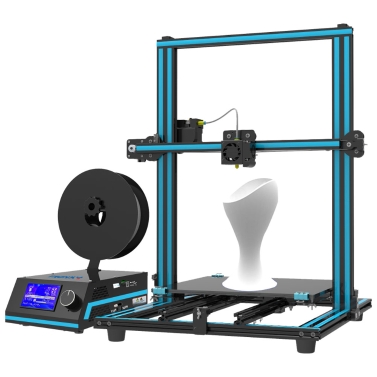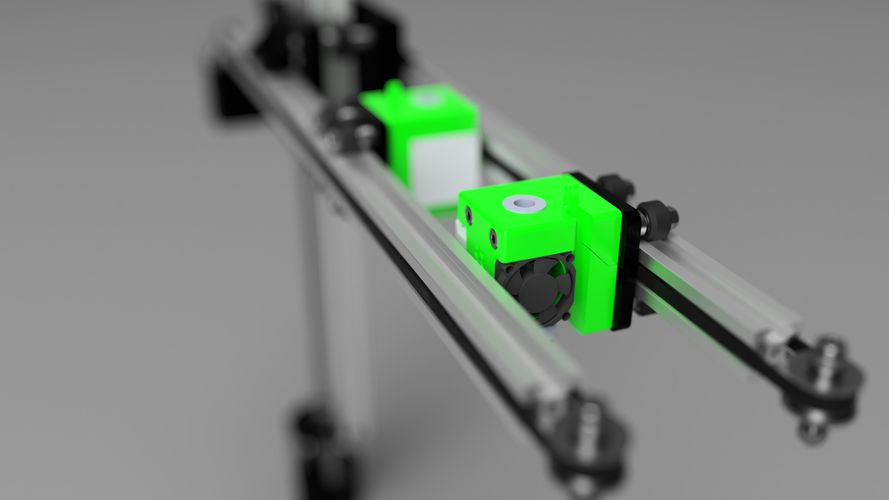High detail 3d printing
Best High Resolution 3D Printers 2022: Complete Buyer's Guide
Resolution is a much-misunderstood aspect of accurate 3D printing, and there are many important factors that affect print quality beyond just layer height. This article recommends the best high-resolution 3D printers, explains the factors making up a high-resolution 3D printer, and the benefits and drawbacks.
Typically within 3D printing resolutions, the Z-axis resolution, or Z-resolution, is most discussed. This is the vertical resolution and means the minimum layer height or thickness possible for a 3D printer.
Small layers mean better resolution, and better surface quality parts with smoother surfaces and crisper edges.
Therefore, having a high-quality 3D printer that can print with small layer heights can be a great advantage. However, this is not the only factor that affects print quality, with a host of others affecting whether a high-resolution 3D printer actually prints accurate, smooth parts.
Accurate 3D printers we recommend
| Name | Max build volume (mm) | Min layer height | Price | Where to buy |
|---|---|---|---|---|
| Ender 3 V2 | 220 x 220 x 250 | 0.1 mm | $279 | Creality Store here |
| Elegoo Mars 2 Pro | 129 x 80 x 160 | 0.01 mm | $280 | Elegoo here |
| Anycubic Photon Mono 4K | 132 x 80 x 165 | 0.01 mm | $299 | Anycubic Store here |
| Elegoo Mars 3 | 143 x 90 x 165 | 0.01 | $349 | Elegoo here |
| Prusa i3 MK3S | 250 x 210 x 200 | 0.05 mm | $749 / $999 | Prusa Store here |
| Formlabs Form 3 | 145 x 145 x 185 | 25 microns | $3,499 | Formlabs Form 3 |
| Ultimaker S3 | 230 x 190 x 200 | 20 microns | $3,850 | Dynamism Store here |
Resolution in 3D printing: X, Y and Z resolution
Z-resolution corresponds to the layer height of a printed part. However, the X and Y-planes are also very important in a high resolution 3D printer.
However, the X and Y-planes are also very important in a high resolution 3D printer.
The X and Y axes control the 2D parts of the print: those within each 2D layer. The Z then adds multiple layers, responsible for height – the third dimension. Though they are all axes, the XY and Z axes are controlled by two separate systems, with some FDM printers having far more accurate Z-resolutions than XY.
The X and Y resolutions are the smallest movements the printer’s print head (the projector, extruder or laser, depending on technology) can make within a layer – horizontally.
Different 3D printing technologies are capable of better resolutions than others. For example, SLA 3D printers are more accurate than FDM 3D printers, even though their Z-resolutions can look similar on paper. This is mostly down to the better XY resolutions resin 3D printers can print with, leading to smoother surface areas, with the best resin printers able to print parts with barely noticeable layer lines.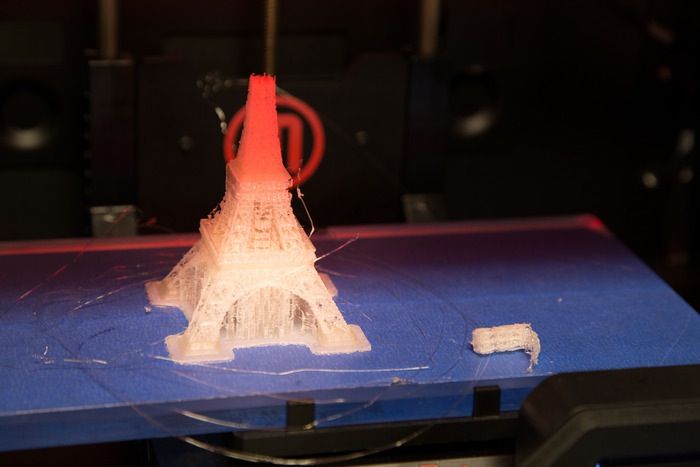
However, other factors can also significantly affect print quality.
Other factors that affect print quality
- Nozzle size: smaller nozzles on FDM 3D printer extruders can print more intricate and precise details. Standard nozzles are typically 0.4mm, though you can get far smaller 0.1 or 0.2mm nozzles for small and accurate details. They also work better for printing supports and overhangs.
- Stability of frame & vibrations: a sturdy, heavy metal frame that anchors the printer and print bed to the ground is less affected by vibrations and other extraneous factors that can affect print quality.
- Material: different materials are more accurate and precise than others, or are easier to print successfully than others.
- Technology: for example, SLA printers are more accurate than FDM, and PolyJet offers some of the best precision in 3D printing.
- Slicer and printer settings: your 3D slicer settings will make all the difference in print quality, and even the most high resolution 3D printers will print poor quality models if not optimized.

When do high quality 3D printers make the most difference?
If you plan on 3D printing a very basic structure like a cube, whether you use a high quality 3D printer, or use large or small layers, will make no difference. In fact, using small layer heights will just make the exact same print take far longer.
For these very basic models with few intricate parts or details, a standard cheap 3D printer will work almost as well as an industrial, high-resolution 3D printer that costs 20x the price.
However, high-quality precise 3D printers make a significant difference in more complex parts that have diagonal or arched lines or sides, or have embossing and engravings.
Especially in curved or diagonal parts, the lower the layer height and more accurate the printer, the less stepped these features will appear, and the smoother they will look, even up close.Very high-resolution 3D printers such as resin printers are commonly used to 3D print jewelry molds, such as this 3D printed ring. Source: Shapeways.
Source: Shapeways.
Moreover, if you are printing a small part, for example 3D printing a miniature or tabletop model, using an accurate printer with very small layer heights can be worth it, as even if it takes several times as long this still won’t take more than an hour.
The best high-resolution 3D printers
Now we have illustrated the components that make up a high-quality 3D printer, here are some recommendations.
High resolution and quality here are relative, meaning that we have chosen those in each price range that excel – a $200 3D printer cannot compete with an industrial 3D printer costing $20,000, but it may be the best in its price range.
3DSourced is reader-supported. When you buy through links on our site, we may earn an affiliate commission. Learn more
Ender 3 V2 – accurate 3D printer for under $300
- Price: $279 – Available on Creality Official Store here / Available on Amazon here
- Build volume: 220 x 220 x 250 mm
- Type of 3D printer: FDM 3D printer & DIY 3D printer
- Minimum layer height: 0.
 1mm
1mm
Just as the original Ender 3 was starting to get long in the tooth, Creality swooped in with the Ender 3 V2. A well-thought-out printer, the Ender 3 V2 remedies many of the misgivings of its predecessor while still keeping the asking price affordable to even the most budget-restrained makers.
The belt tensioners, 4.2.2 32-bit mainboard, and silent stepper motor drivers do a lot to present what feels like a far more modern printer compared to the Ender 3.
In the context of low-cost high-resolution 3D printer performance, the Ender 3 V2 spec sheet doesn’t exactly wow, with a middling 100-micron layer resolution. But, don’t be fooled; high-resolution printing is defined by more resolution alone.
In action, the Ender 3 V2 assembles with a level of accuracy that feels inordinately good for a low-cost FDM printer. With few visible, warping, or layering issues with an excellent overall quality for larger parts and respectable results for smaller, detailed parts.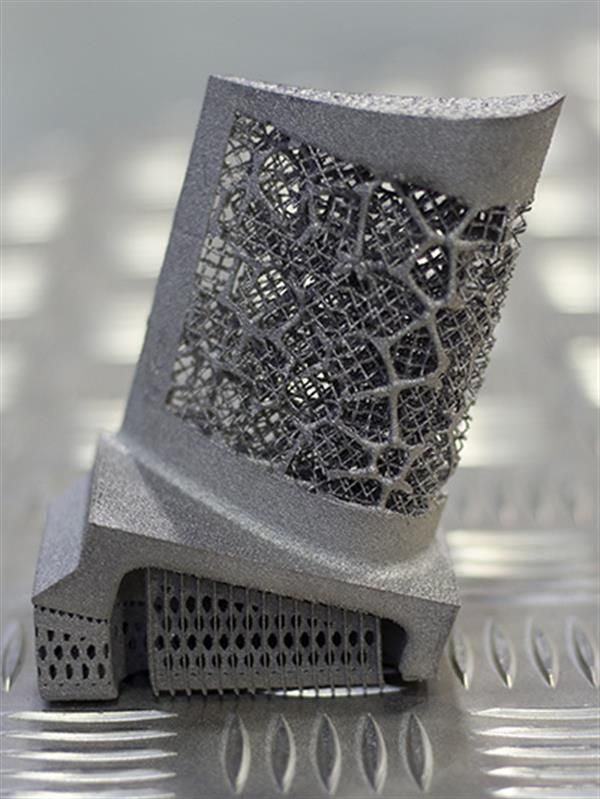 And, coupled with that is a suitably large build volume – 220 x 220 x 250 mm to be exact – for larger projects and even small-scale batch printing.
And, coupled with that is a suitably large build volume – 220 x 220 x 250 mm to be exact – for larger projects and even small-scale batch printing.
For the price, you additionally get to play with a decent range of materials – PLA, ABS, PETG, TPU. The only caveat is you’ll need to stick to more straightforward prints, those relatively free of intricate embossing, minute detail, tight arches, and the like.
In our experience, the Ender 3 V2 shines best when used to create household items such as plant pots or, say, vases, figurines, toys, accessories, and similar items. We’d wager it also packs in enough printing aptitude for a modest business selling non-geometrically complex products.
Be warned; the Ender 3 V2 is very much a hobby kit printer, requiring its fair share of tinkering to perform at its best. Curious beginners up for a challenge and seasoned makers should find this a gratifying part of the printing process, but green newcomers may prefer an option a little lighter on the ‘hands-on’ aspects.
Elegoo Mars 2 Pro
- Price: $299 – Available at Elegoo store here / Available on Amazon here
- Build volume: 129 x 80 x 160 mm
- Type of 3D printer: LCD 3D printer
- Z-axis accuracy: 0.00125 mm, XY Resolution: 0.05 mm
The Elegoo Mars and Anycubic Photon range have both revolutionized low-cost, high-resolution 3D printing for hobbyists and businesses worldwide. The Elegoo Mars 2 is capable of such accurate resin models that it is increasingly used for casting 3D printed jewelry molds before having them made into gold or other metal rings, bracelets, and chains.
Read more: our Elegoo Mars 2 Pro review & test prints
As an MSLA printer, the Elegoo Mars prints resin models that outperform its FDM counterparts, with high resolution 3D prints that barely show their layers. The 6-inch 2K LCD screen makes for fast 3D printing, able to cure a layer every 2 seconds.
Additionally, the Mars 2 Pro’s CNC machined aluminum structure improves stability, eliminating outside vibrations that could affect a precise 3D printed model’s detailed features. Moreover, the new and improved build plate is designed for better adhesion and better quality outcomes.
The printer is accessible in 12 languages, so non-English speakers needn’t worry, and if you do have any problems with your Elegoo Mars 2 Pro, the company will replace it with its 1-year warranty. Overall, it’s a great, high-quality 3D printer for cheap and precise resin part production.A dinosaur head we 3D printed when we reviewed the Elegoo Mars 2 Pro.
Anycubic Photon Mono 4K
- Price: $299 – Available at Anycubic Official Store here / Available on Amazon here
- Build volume: 132 x 80 x 165 mm
- Type of 3D printer: LCD 3D printer
- Z-axis accuracy: 0.00125 mm, XY Resolution: 0.035 mm
Yet another iterative upgrade to a respected family of resin printers, the Anycubic Photon Mono 4K is another impressive option for those high-res 3D printer heads out there. It’s no understatement to count the Anycubic Photon Mono 4K among the top cheap high-resolution 3D printers out there.
It’s no understatement to count the Anycubic Photon Mono 4K among the top cheap high-resolution 3D printers out there.
Under the hood, the Anycubic Photon Mono 4K sports, you guessed it, a 4K LCD panel capable of a pixel resolution of 35 microns, a 15-micron improvement on its predecessor. In layman’s terms, this equates to a smooth finish and fine detail in every print, both immediately apparent to the naked eye.
Imperfections are near indistinguishable, and, dare we say it; the results are as close to perfection as we’ve seen in this price range in the overwhelming majority of prints. The Anycubic Photon Mono 4K also nips through prints with a more-than-respectable sub 2 second layer cure time.
For us, the printer brims with hobby potential. We’d be hard-pressed to pinpoint an application where it doesn’t impress. That said, the Anycubic Photon Mono 4K comes into its element with 3D models and similar display items thanks to its propensity for carving out detailed features.
Much like other resin printers, the Anycubic Photon Mono 4K comes with its fair share of mess and requires strict adherence to a regular cleaning regimen. The absence of a resume function and an occasionally temperamental native slicer feel like unfortunate oversights. But, these are minor gripes for an otherwise excellent low-priced, small form factor resin printer.
Elegoo Mars 3 – Best Cost-Effective Resin Pick
- Price: $349 – Available at Elegoo store here / Available on Amazon here
- Build volume: 143 x 90 x 165 mm
- Type of 3D printer: LCD 3D printer
- Z-axis accuracy: 0.00125 mm, XY Resolution: 0.035 mm
The Elegoo Mars is back and arguably better than ever, with a new numeral slapped on for good measure. Fast, beautifully detailed, compact, and cost-effective, the Elegoo Mars 3 also sports the specs we like to see in high-resolution-geared resin printers, namely a 6. 6-inch 4K Ultra Monochrome LCD and a razor-thin 35-micron resolution.
6-inch 4K Ultra Monochrome LCD and a razor-thin 35-micron resolution.
Marketing and technical blather aside, Elegoo Mars 3 delivers impressively detailed results with clean edges and on-point accuracy suitable for even the most demanding resin projects. A larger build volume than the Mars 2 Pro, tallying up to 143 x 90 x 165 mm, also lends itself to larger prints while keeping up those minute features and finer details.
We’re particularly impressed with how well the printer fares when tackling figurines, toys, and models, even what we deem large ones for a resin printer. Best of all, the Elegoo Mars 3 sticks to the Mars tradition of no-nonsense printers that perform to the same high standard day-in, day-out. In other words, a workhorse.
Despite some reservations about the flimsy lid and the lack of features like air filtration and Wi-Fi connectivity, we highly recommend the Elegoo Mars 3 for makers, hobbyists, and businesses looking for a cheap high-resolution 3D printer. Note that the Elegoo Mars 3 is tied to the ChiTuBox slicer and won’t work with third-party alternatives.
Note that the Elegoo Mars 3 is tied to the ChiTuBox slicer and won’t work with third-party alternatives.
Prusa i3 MK3S+
- Price: $749 kit / $999 assembled – Available on Prusa Store here
- Build volume: 250 x 210 x 200 mm
- Type of 3D printer: FDM 3D printer & DIY 3D printer
- Minimum layer height: 50 microns
Balancing high resolution and workhorse-like reliability, the Prusa i3 MK3S+ is known for being one of the best 3D printers around. Available as a 3D printer kit or pre-assembled for a few hundred dollars extra, this FDM printer can print precise 50-micron layers, and do so time and time again without fail.
For better XY resolutions and part quality, resin printers like the Elegoo Mars are still better, but the Prusa balances still excellent quality, with wider material compatibility – from ABS to PLA to Polycarbonate to Nylon! – and can even be adapted into a color 3D printer that can print 5 colors simultaneously if you purchase the Multi Material Upgrade Kit.
- You can purchase the Multi Material Upgrade Kit from Prusa here.
It’s fast, always improving, and balances excellent resolution with dogged grit and reliability.
Formlabs Form 3
- Price: $3,499 – Available on Dynamism Store here
- Build volume: 145 x 145 x 185 mm
- Type of 3D printer: SLA 3D printer
- XY Resolution: 25 microns
The leading prosumer resin 3D printing company, Formlabs printers are now used extensively across the jewelry, dental, medical and hearing aid sectors.
Looking at the numbers underpinning the Formlabs Form 3 – chiefly, a 145 x 145 x 185 mm build volume and 25-micron resolution – isn’t exactly a head-turner. However, Formlabs’ innovative LFS tech is the type of innovation we like to see. The real sophistication lies in just how easy the printer is to use. With the Formlabs Form 3, the onus is on the machine to do its thing, no faffing and no babysitting required.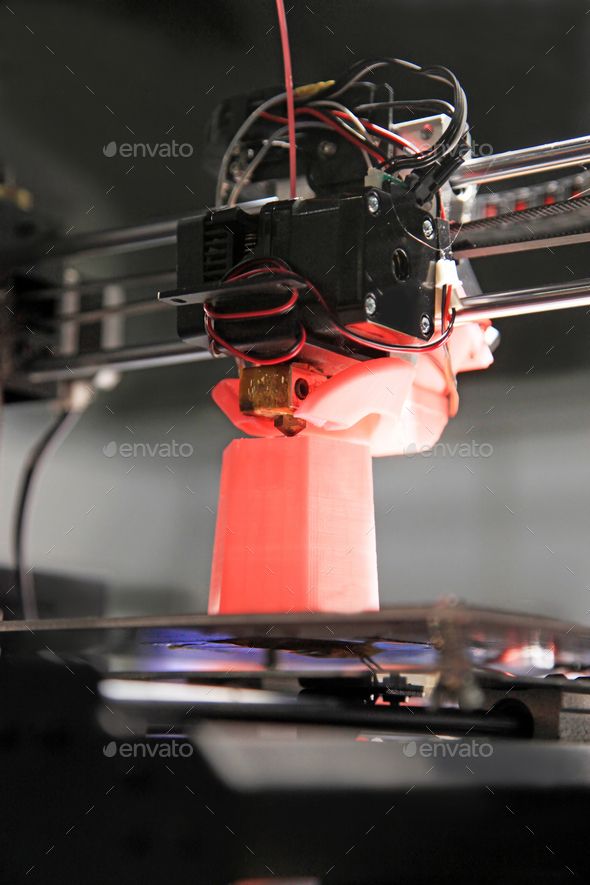
And, the results follow. Equipped with high-quality resin, the Formlabs Form 3 performs exceptionally to yield beautifully finished and detailed prints suitable for commercial ends. Print failures are all but nonexistent; you’d need to physically shake the machine during a print to trigger anything resembling errors.
You do pay a hefty premium for the pleasure of owning a Formlabs Form 3. However, the expense is quickly recouped in time saved alone by the set-a-task-and-forget nature of the printer, something that could conceivably prove invaluable in a fast-paced commercial environment. For small to medium-sized businesses requiring small-batch failsafe precision models along with prototyping, there’s little out there to rival the Formlabs Form 3.
Overall, for precise 3D printing, the Form 3 is one of the highest resolution and quality 3D printers out there.
Ultimaker S3
- Price: $3,850 – Available on Dynamism Store here / Available on Matterhackers here
- Build volume: 230 x 190 x 200 mm
- Type of 3D printer: FDM 3D printer & dual extruder 3D printer
- Minimum layer height: 20 microns
Smaller, but every part as technically brilliant as the S5, the Ultimaker S3 is capable of incredible 20-micron layer heights that are so small you’ll struggle to see them. Though this slows down print time by increasing the number of layers in a part, the resulting model will have unmatched quality compared to almost any other FDM printer.
Though this slows down print time by increasing the number of layers in a part, the resulting model will have unmatched quality compared to almost any other FDM printer.
As well as the fantastic precision, the Ultimaker S3 is also a dual extruder 3D printer, allowing for the production of precise, multi-colored or multi-material 3D prints, and as a result is used heavily in creating architectural building model prototypes before building work begins.
- For those interested in architectural model production, view our ranking of the best architecture software.
The printer is easy to use, easy to print with – Ultimaker also own Cura, the most popular 3D slicer – and offers fantastic 20-micron precision with a wide variety of materials compatible, including carbon fiber. Overall, the printer speaks for itself, and proves itself as one of the best high resolution 3D printers in FDM.
Credits: featured image source: flashforge-eu.com.
Advantages of a High Resolution 3D Printer
- Better quality: high resolution makes for smoother surface finishes, with great details and aesthetics on parts.

- The only way to get fine details: models that have arches and sharp diagonal details can look very jagged in higher layer heights, with low resolution 3D printers unable to adequately print these details.
Disadvantages of an accurate 3D printer
- Perfect settings required: increased precision requires perfect calibration, the perfect temperature settings to avoid imperfections in the filament or resin, and the right heated bed temperature and adhesion on the print bed. Any errors here can create imperfections in the print.
- Much slower: printing with 25-micron layer heights takes four times as long as 100-micron layer heights, as four 25-micron layers equal the height of one 100-micron layer. For large and complex models, prints can take days.
- Higher chance of print failure: the more layers a model has, the more opportunities there are for errors to occur – which could render the part useless.
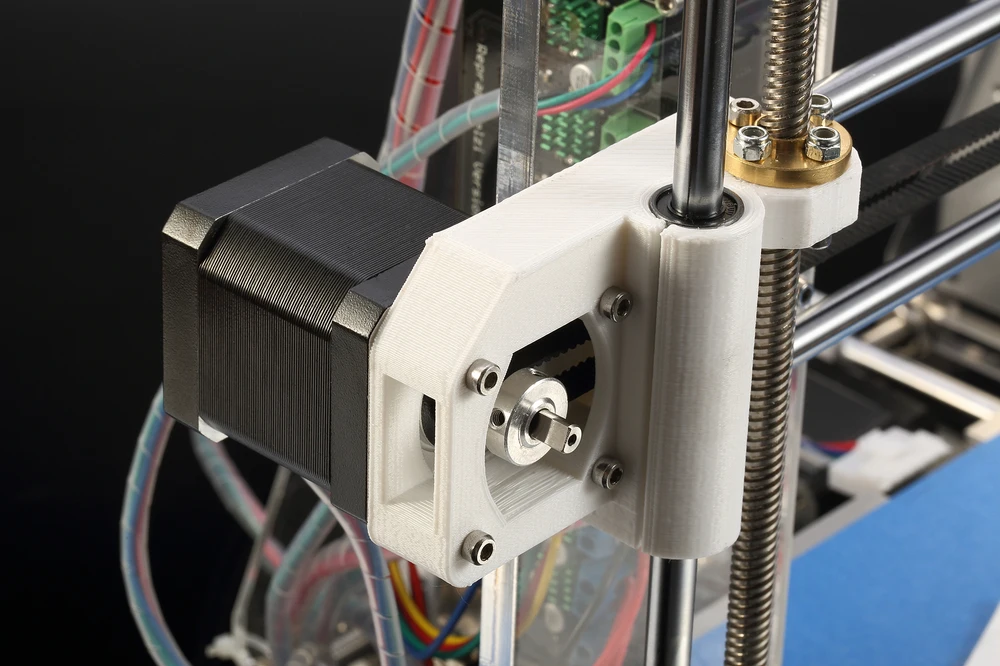
High-Resolution 3D Printing Technologies
Some 3D printing technologies considered high-resolution include:
FDM – Fused Deposition Modeling
FDM, or Fused Deposition Modeling, is the most popular and common technology used for high-resolution printing. The process involves depositing melted filament in layers on a fixed build platform using a heated extruder to create models. FDM falls on the lower end of the high-res spectrum and is generally favored as a low-cost alternative to more expensive technologies. FDM printers commonly offer resolutions in the 50 to 200 microns range.
Resin (SLA, DLP, LCD)
Photopolymerization, commonly known as resin 3D printing, involves projecting a laser or light source to cure liquid light-sensitive resin into layers. Specific technologies include Stereolithography (SLA), Low Force Stereolithography (LFS), Masked Stereolithography Apparatus (MSLA), and Digital Light Processing (DLP). Resin printers commonly hit layer resolutions as low as 25 to 35 microns.
MJF – Multi Jet Fusion
Multi-Jet Modeling, or Material Jetting, uses inkjet print heads to jet melted materials layer by layer to create a 3D part or model. Expensive and highly accurate, MJF printers are the reserve of large businesses with deep coffers.
PolyJet – Photopolymer Jetting
Printers that employ PolyJet, or Photopolymer Jetting, rely on layers of photo-sensitive liquid photopolymer resin jetted via print heads then cured thanks to a UV light source to create prints. Much like MJF, PolyJet involves considerable expense, although the printers are generally smaller in size.
High-Resolution 3D Printer FAQs
Are High-Resolution 3D Prints Stronger?
No, the opposite. As a general rule, thicker layers (or a lower resolution) generate tougher results. This is because they minimize the number of contact points between layers. Fewer layers interfacing with one another means a lower likelihood of bond strength issues.
But, print strength relies on many factors, including layer adhesion and height, extruder and bed temperature, material quality and type, and the printing technology employed. A definitive answer is more related to the specific printer than the resolution. A capable device, like any of the best high-resolution 3D printers, produces reliable parts at higher resolutions.
What Is High-Resolution 3D Printing?
The answer varies greatly depending on who you ask. For the sake of simplicity, high-resolution 3D printing is best described as the process of printing parts with higher overall quality – whether that be smoothness, finish quality, detail, or model accuracy – than you’ll typically find in the 3D printing space.
What Can You Do With a High-Resolution 3D Printer?
High-resolution 3D printing suits a vast swathe of applications. In the commercial field, companies favor high-resolution printing in areas such as dentistry, jewelry, biomedicine, and all manner of functional prototyping where precision is critical.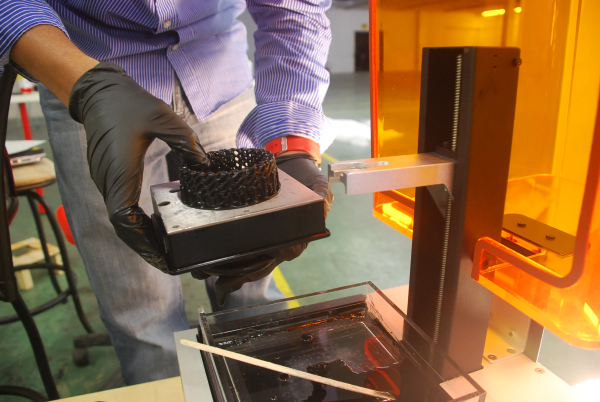 In the hobby space, makers turn towards high-resolution printing for projects that require fine detail, such as figurines, modeling, and other decorative pieces.
In the hobby space, makers turn towards high-resolution printing for projects that require fine detail, such as figurines, modeling, and other decorative pieces.
What Effect Does 3D Print Resolution Have on Speed?
Higher resolutions decrease speed.
Print speed relates to how fast a printer deposes each layer. Since high-resolution printing is synonymous with thinner layers, the print speed is generally slower than lower-res printing. High-resolution 3D printing sacrifices print speed in favor of accuracy. Exact timings depend on the desired resolution, the technologies underpinning the printer in use, such as resin or MJF, and the complexity of the model.
We also have an article about how to maximize dimensional accuracy and precision in 3D printing.
What Does Resolution Mean in 3D Printing?
Looking for a high resolution 3D printer? “Resolution” is an often discussed but seldom understood value in the world of 3D printing and additive manufacturing. How does XY and Z resolution influence on the quality of your 3D prints? What's minimum feature size and what layer thickness should you choose?
How does XY and Z resolution influence on the quality of your 3D prints? What's minimum feature size and what layer thickness should you choose?
In this comprehensive guide, you'll learn how 3D printer resolution affects your 3D prints and how it differs between SLA, FDM, and DLP 3D printers.
Technology has been in a resolution war for decades. Televisions recently quadrupled pixel counts from HD to 4K and are poised to do it again soon to 8K. Cell phones, tablets, and anything with a screen will have its resolution as the lead on the spec sheet, provided that it’s something to boast about. But this is nothing new. Resolution wars have been waged since digital technology became popular, and the printing industry was one of the first battlegrounds.
If you were around in the 80’s and 90’s, you remember Canon, Brother, HP, Epson, and Lexmark (among others) battling it out for print speed and resolution. What started at 100x100 dots per inch (DPI) quickly escalated to 300x300, then 600x600, and finally the current industry standard of 1200x1200 DPI.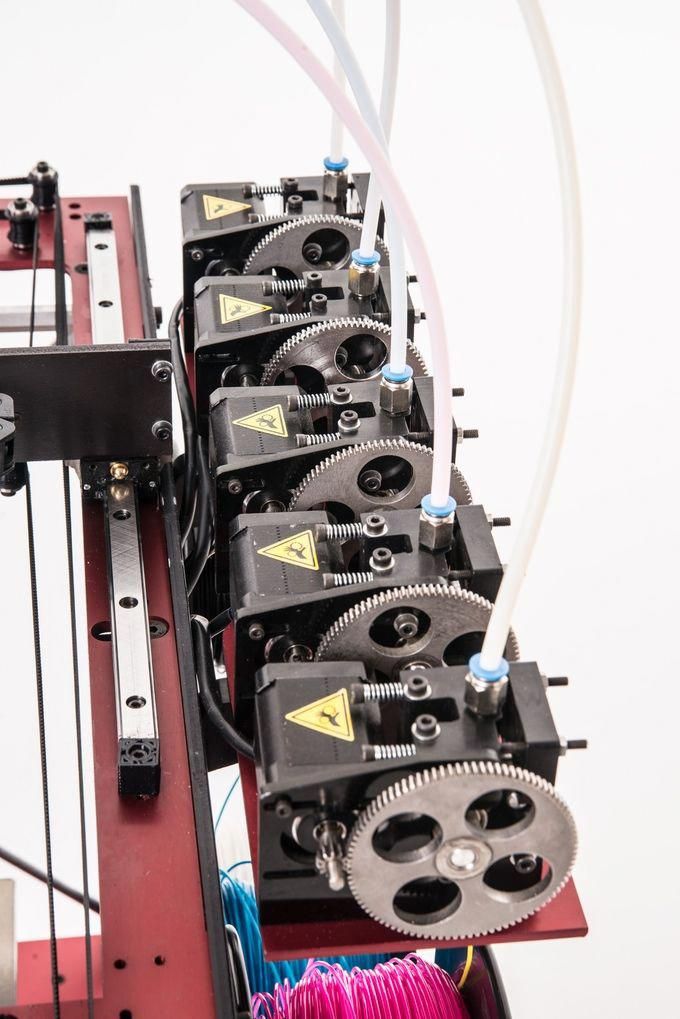 Back then, the meaning of these values was clearly understandable; even the units made perfect sense. Unfortunately, things get more complicated when you add another dimension to printing.
Back then, the meaning of these values was clearly understandable; even the units made perfect sense. Unfortunately, things get more complicated when you add another dimension to printing.
A print’s level of detail is impacted by the 3D printer's resolution in all three dimensions.
In 3D printing and additive manufacturing, there are three dimensions to consider: the two planar 2D dimensions (X and Y) and the Z dimension that makes it 3D printing. Since the planar and Z dimensions are generally controlled via very different mechanisms, their resolutions are going to be different and need to be treated separately. As a result, there is a lot of confusion about what the term “3D printing resolution” means and what level of print quality to expect.
Sample part
See and feel Formlabs quality firsthand. We’ll ship a free sample part to your office.
Request a Free Sample Part
Formlabs' high resolution SLA 3D printers have high Z-axis resolution and a low minimum feature size on the XY plane, allowing them to produce fine details
What makes a 3D printer high resolution? There’s not a one-number answer.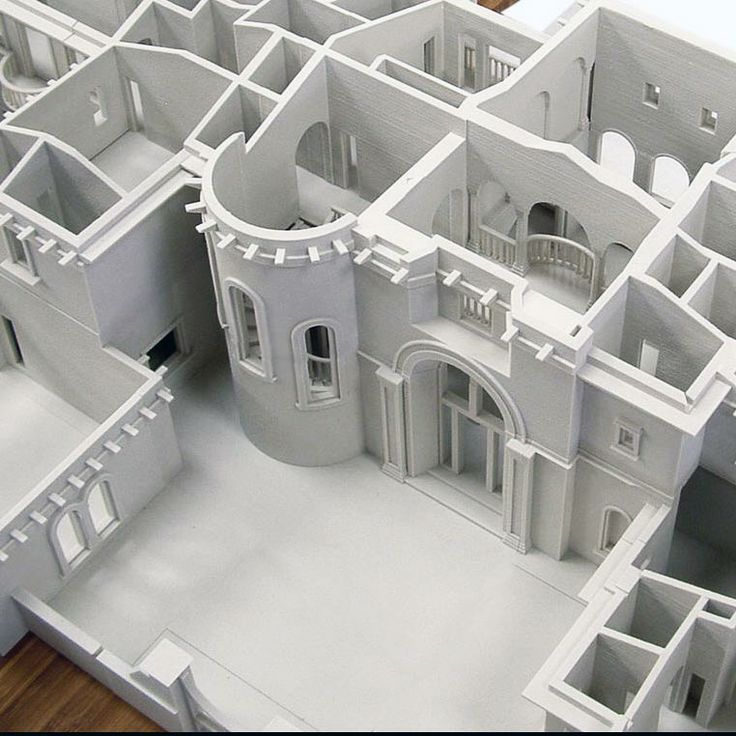 Since 3D printers produce parts in 3 dimensions, you will have to consider at least two numbers: the minimum feature size of the XY plane and the Z-axis resolution (layer thickness or layer height). The Z-axis resolution is easily determined and therefore widely reported even though it is less related to print quality and surface finish. The more important XY resolution (minimum feature size) is measured via microscopic imaging and is therefore not always found in spec sheets.
Since 3D printers produce parts in 3 dimensions, you will have to consider at least two numbers: the minimum feature size of the XY plane and the Z-axis resolution (layer thickness or layer height). The Z-axis resolution is easily determined and therefore widely reported even though it is less related to print quality and surface finish. The more important XY resolution (minimum feature size) is measured via microscopic imaging and is therefore not always found in spec sheets.
Practically, it means that you should pick a 3D printer that performs well in both categories (in all 3 dimensions).
White Paper
Looking for a 3D printer to realize your 3D models in high resolution? Download our white paper to learn how SLA printing works and why it's the most popular 3D printing process for creating models with increadible details.
Download the White Paper
White Paper
Download this report for an internal test that Formlabs created to determine the dimensional accuracy of the Form 3 and Form 3B.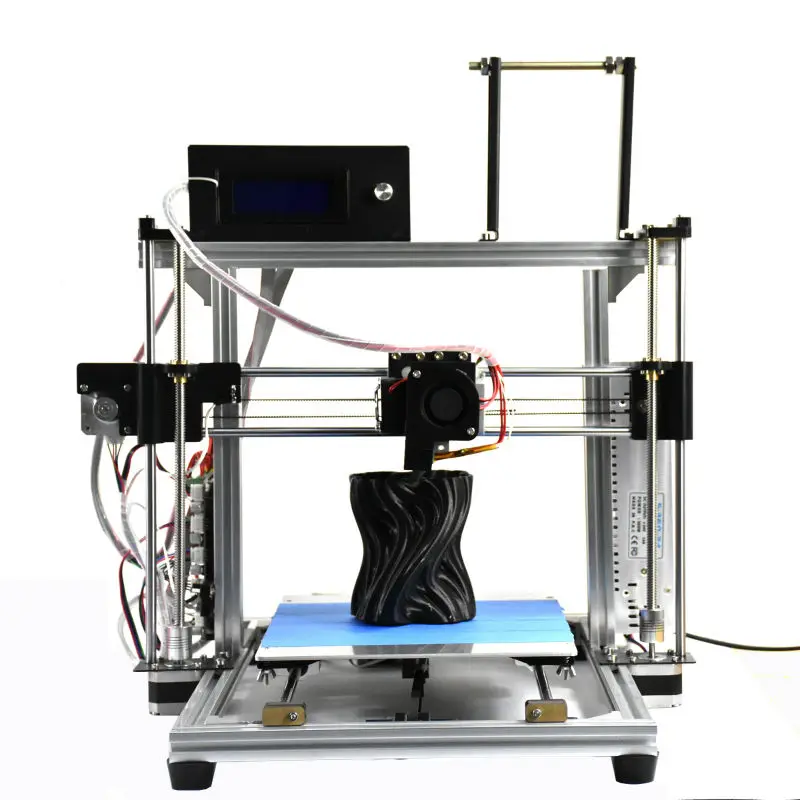
Download the White Paper
A lot has changed since the first desktop 3D printers became available to the public. Now stereolithography (SLA) 3D printers, like the Form 3+, are competing for the same desktop spots as fused deposition modeling (FDM) 3D printers. One of the main advantages that resin-based SLA 3D printers hold over their plastic-melting cousins is print quality: SLA 3D printers produce significantly smoother and more detailed prints. While SLA printers can usually also achieve significantly smaller layer thicknesses, the reason for the improved print quality lies in their much higher XY-resolution.
SLA 3D printers (right) offer higher resolution and can produce significantly smoother and more detailed prints than FDM 3D printer (left).
Unlike on FDM 3D printers, minimum feature size in the XY plane on SLA 3D printers is not limited by molten plastic flow dynamics but rather optics and radical polymerization kinetics. While the math is complicated (and outside the scope of this post), it shakes out to this: features on SLA prints can be approximately as small as the diameter of their laser spots.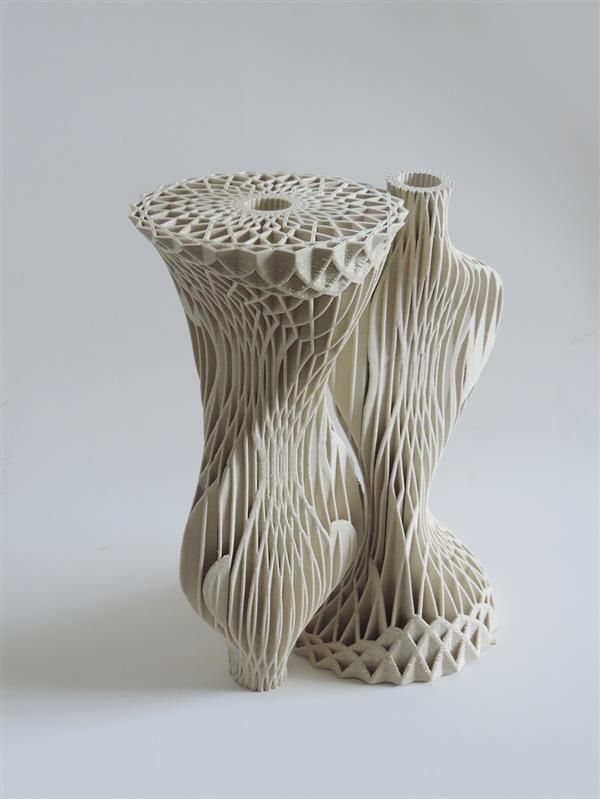 And laser spots can be really small, especially compared to the nozzle size of FDM printers' extruders.
And laser spots can be really small, especially compared to the nozzle size of FDM printers' extruders.
Read our in-depth guide about FDM vs. SLA 3D printers to learn how they compare in terms of print quality, materials, applications, workflow, speed, costs, and more.
Resin 3D printers like SLA, LFS and DLP technologies offer the highest resolutions of all 3D printing processes available on the desktop. The basic units of the these processes are different shapes, making it difficult to compare the different machines by numerical specifications alone.
DLP 3D printers have a fixed matrix of pixels relative to the build area, while laser-based SLA and LFS 3D printers can focus the laser beam on any XY coordinate. This means that laser-based machines, given high-quality optics, can more accurately reproduce the surface of a part even if the laser spot size is larger than the DLP pixel size.
Whichever resin 3D printing process you choose, however, professional resin 3D printers should be able to capture the finest details of your creations, from photorealistic models to intricate jewelry.
In SLA and LFS 3D printing (left), layer lines are close to invisible. As a result, surface roughness is reduced, which ultimately leads to smooth surfaces, and for clear materials, more translucent parts. DLP 3D printers render images using rectangular voxels, which causes an effect of vertical voxel lines (right).
Learn more about the differences between SLA and DLP 3D printers and see how they compare in terms of resolution, accuracy, precision, build volume, surface finish, speed, and workflow.
In the world of 3D printing, no factor influences print quality more than XY resolution. Often discussed but seldom understood, the definition of XY resolution (also called horizontal resolution) varies by 3D printing technology:
- SLA and LFS 3D printers: a combination of the laser’s spot size and the increments by which the laser beam can be controlled
- DLP 3D printers: the pixel size, the smallest feature the projector can reproduce within a single layer
- FDM 3D printers: the smallest movement the extruder can make within a single layer
As a rule of thumb, the lower the number, the better the details.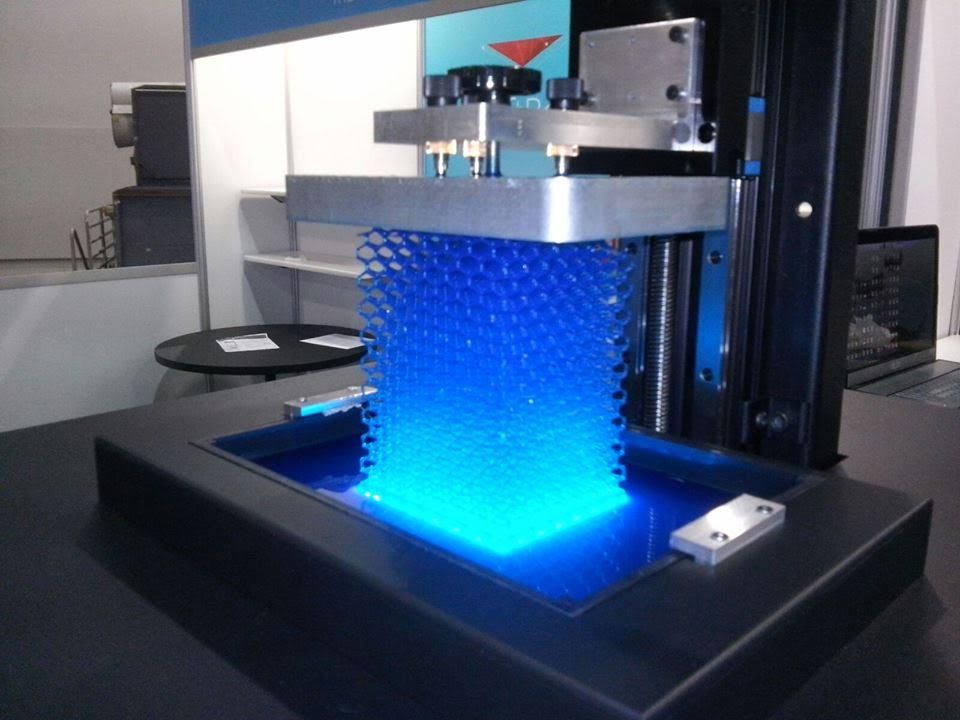 Yet this number is not always included in spec sheets, and when it is, the published value is not always accurate. To truly know a printer’s XY resolution, it’s important to understand the science behind the number.
Yet this number is not always included in spec sheets, and when it is, the published value is not always accurate. To truly know a printer’s XY resolution, it’s important to understand the science behind the number.
Practically, how does XY resolution affect your 3D prints? In order to find out, we decided to test the Form 2 SLA 3D printer. The Form 2 has a laser spot size of 140 microns (FWHM), which should allow it to print fine details on the XY plane. We put it to the test to see if this ideal resolution holds true.
To test the Form 2’s minimum feature size on the XY plane, we designed a model (left) with lines ranging from 10 to 200 microns and printed it in Clear Resin (right).
First, we designed and printed a model to test the minimum feature size on the XY plane. The model is a rectangular block with lines of varying widths in horizontal, vertical, and diagonal directions to avoid directional bias. The line widths range from 10 to 200 microns in 10 micron steps and are 200 microns tall, which equates to two layers when printed at 100-micron Z resolution.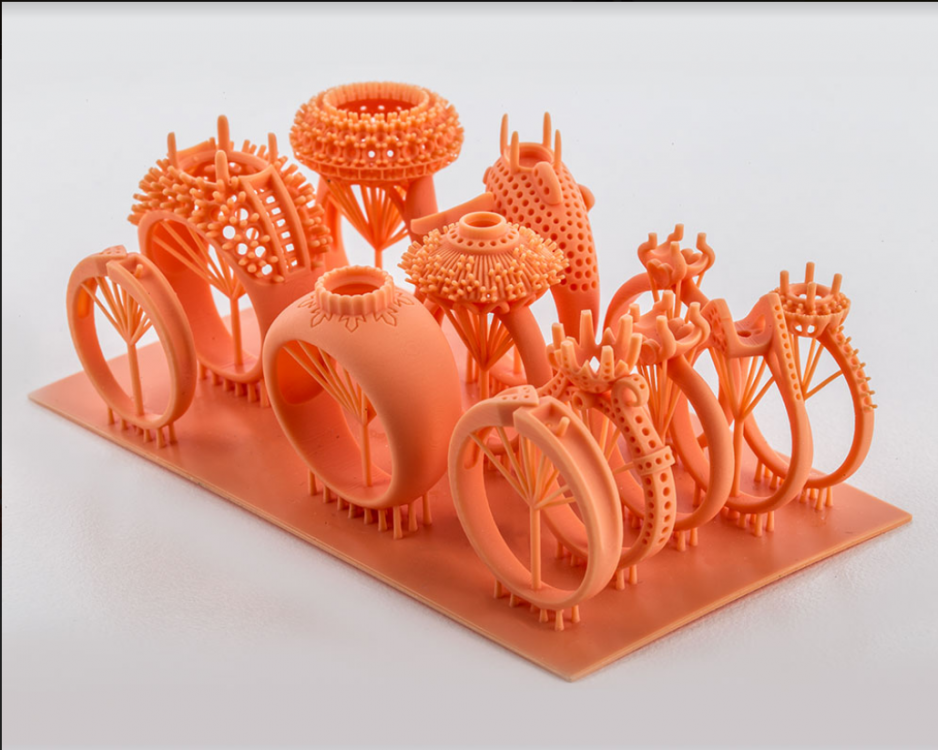 The model was printed in Clear Resin, washed twice in an IPA bath, and post-cured for 30 minutes.
The model was printed in Clear Resin, washed twice in an IPA bath, and post-cured for 30 minutes.
The model was photographed and tinted green to improve visibility. On the right side of the window, the vertical yellow line with black points measures the width of a photographed line.
After post-curing, we put the model under a microscope and took high-resolution photos for analysis. Using ImageJ, the NIH’s free image analysis software, we first scaled the pixels of the images and then measured the actual widths of the lines printed. We collected over 50 data points per line width to eliminate measuring errors and variability. In total, we printed and analyzed three models on two different printers.
The results indicate that the Form 2 has the same ideal and actual XY resolution for features that are 150 microns and larger.
As the print’s line width decreases from 200 to 150 microns, the ideal values are within the 95% confidence interval of the measured value. As the intended line widths get smaller than 150 microns, the measured interval starts to deviate significantly from the ideal. This means that the printer can reliably produce XY features as small as 150 microns, about the size of a human hair.
As the intended line widths get smaller than 150 microns, the measured interval starts to deviate significantly from the ideal. This means that the printer can reliably produce XY features as small as 150 microns, about the size of a human hair.
The Form 2’s minimum feature size on the XY plane is about 150 microns—only 10 microns larger than its 140-micron laser. The minimum feature size can never be smaller than the laser spot size, and there are many factors that affect this value: laser refraction, microscopic contaminants, resin chemistry, and much more. Considering the printer’s entire ecosystem, a 10-micron difference is nominal. Not every 3D printer’s published resolution holds true, so it’s a good idea to do plenty of research before choosing the one that's right for your project.
If your work calls for prints with intricate details, look for a printer with an XY resolution that’s backed by measurable data, not just a number.
When you read 3D printer spec sheets, you’ll see one value show up more than any else: Z resolution.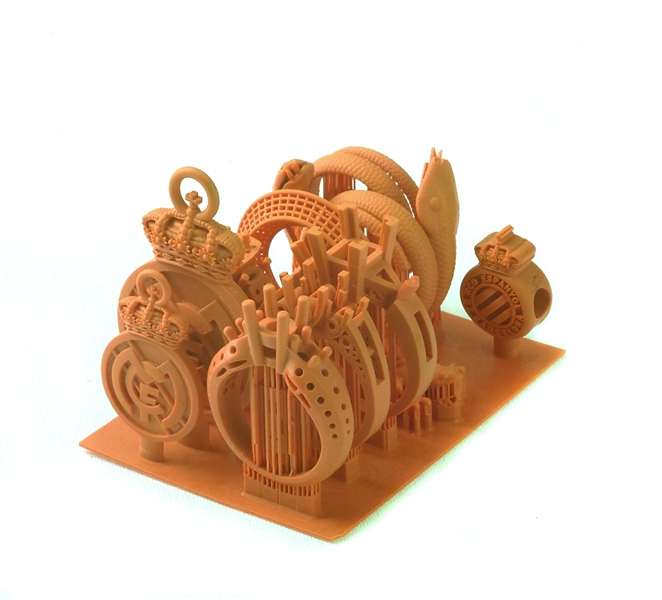 Also known as layer thickness or layer height, the vertical resolution was the first major numerical differentiation between early 3D printers. Early machines struggled to break the 1 mm barrier, but now layer thicknesses on FDM 3D printers can be sub-0.1 mm thin, while LFS and SLA 3D printers are even more precise.
Also known as layer thickness or layer height, the vertical resolution was the first major numerical differentiation between early 3D printers. Early machines struggled to break the 1 mm barrier, but now layer thicknesses on FDM 3D printers can be sub-0.1 mm thin, while LFS and SLA 3D printers are even more precise.
Formlabs 3D printers support layer thicknesses between 25 to 300 microns, depending on the material. This selection of layer heights gives you the ideal balance of speed and resolution. The main question is: what is the best layer thickness for your print?
High resolution 3D printing comes with a tradeoff. Thinner layers mean more repetitions, which in turn means longer times: printing at 25 microns vs. 100 usually increases the print time four-fold. More repetitions also mean more opportunities for something to go wrong. For example, even at a 99.99% success rate per layer, quadrupling the resolution lowers the chance of print success from 90% to 67% if one assumes that a failed layer causes total print failure.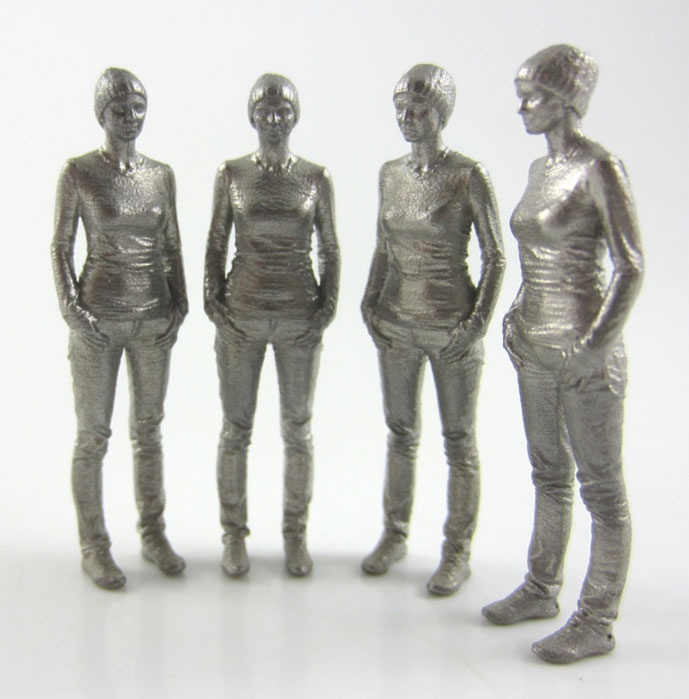
Lower layer thickness equals more time, artifacts, and errors.
Does higher resolution (thinner layers) result in better prints? Not always—it depends on the model to be printed and the 3D printer’s XY resolution. In general, thinner layers equals more time, artifacts, and errors. In some cases, printing models at lower resolutions (i.e. thicker layers) can actually result in higher-quality prints.
Thinner layers are typically associated with smoother transitions on diagonals, which leads many users to generalize and push Z resolution to the limits. But what if the model consists mostly of vertical and horizontal edges, with 90-degree angles and few diagonals? In those cases, additional layers don’t improve the quality of the model.
The issue is compounded if the XY resolution of the printer in question is not perfect and “colors outside the lines” when drawing the outside edges. More layers means more mismatched ridges on the surface. While the Z resolution is higher, the model will look like it is significantly lower quality in this case.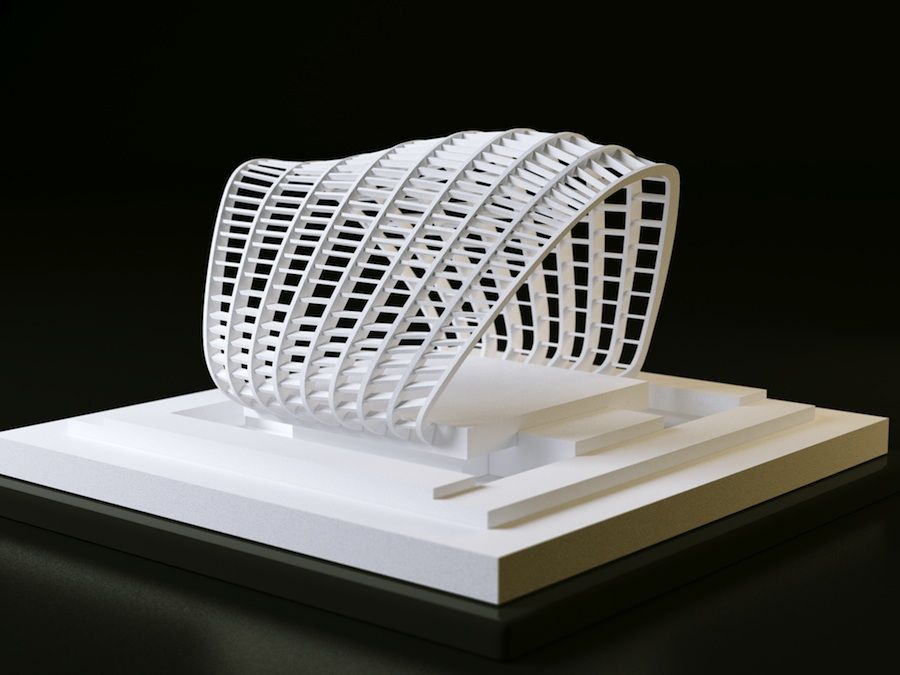
That being said, there are times when you want higher resolution. Given a printer with good XY resolution and a model with intricate features and many diagonal edges, dialing down the thickness of the layers will yield a much better model. In addition, if that model is short (200 or fewer layers) upping the Z-axis resolution can really improve the quality.
Certain designs benefit from a higher Z resolution: organic forms, rounded arches, small embossings, and intricate engravings.
Intricate models with elaborate details call for a higher Z resolution. SLA 3D printed parts have sharp edges, sleek surfaces, and minimal visible layer lines. This example part was printed on the Formlabs Form 3 desktop SLA 3D printer.
As a general guideline, err on the side of thicker layers and only bump up the Z resolution when completely necessary. With the right printer and a certain type of model, higher Z resolution will capture the intricate details of your design.
Draft Resin, the fastest 3D printing resin available for a Formlabs SLA printers, prints at 200 microns and 100 microns, while retaining the a smooth surface finish.
In PreForm, Formlabs provides users with the choice of different layer thicknesses. Depending on the material and the requirements of the application, parts can be printed in the following layer heights: 200, 160, 100, 50, and 25 microns.
The desktop Form 3+ and the large format Form 3L SLA printers are ideal for high resolution 3D printing.
After learning about 3D printing resolution and sorting out the differences in technology and outcomes, we hope it’s much easier to select 3D printer that best matches your workflow and output needs.
To explore the next generation of SLA 3D printing, learn more about the Form 3 and Form 3L LFS 3D printers.
Curious to see the what high resolution 3D printing looks like firsthand? Order a sample part shipped to your office.
Request a Free Sample Part
Choosing a liquid photopolymer for a 3D printer.
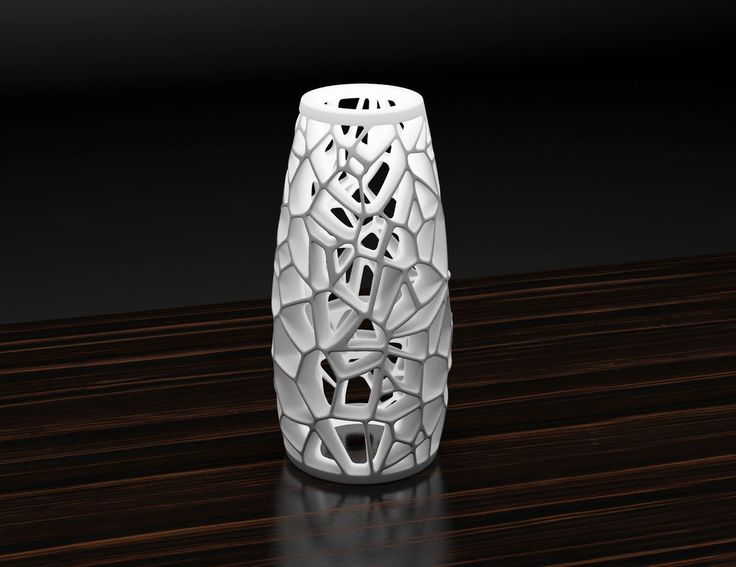 Classification of materials for SLA/DLP 3D printing.
Classification of materials for SLA/DLP 3D printing. Contents:
- Introduction
- SLA Overview
- SLA Standard Resins
- Standard photopolymer resin - Standard
- Clear Photopolymer Resin - Clear
- Engineering photopolymer resins
- Rigid photopolymer resin - Tough (like ABS)
- Durable photopolymer resin - Durable (PP-like)
- Heat resistant photopolymer resin - Heat resistant
- Rubber-like photopolymer resin - Rubber-like (Elastic)
- Ceramic photopolymer resin - Ceramic filled (Hard)
- How to choose the right resin for your application
- Dental and medical SLA resins
- Medical Device Photopolymer Resin - Custom Medical Appliances (Class I Biocompatibility)
- Dental Long Term Biocompatible Resin (Class IIa Biocompatible)
- Biocompatibility class I vs biocompatibility class IIa
- Cast SLA resins
- Cast resin for jewelry making
- Generalized rules
Hello everyone, Friends! With you 3DTool!
This article compares photopolymer resins using Formlabs SLA 3D printing products –
Catalog of photopolymer 3D printers
Photopolymers from FormLabs
Detailed review of the Formlabs Form 3 3D printer
Introduction
The stereolithography prints plastic parts with high resolution, good fine detail and smooth surface. Due to the variety of photopolymer resins available for SLA, this technology is used in many different industries:
-
"Standard" photopolymers are used for prototyping
-
Engineering photopolymers have certain mechanical and thermal properties
-
Dental and medical photopolymers have biocompatibility certificates.
-
Cast photopolymers have a zero ash content after burning.
SLA 3D Printing Resin Overview
SLA uses a laser to cure a liquid photopolymer resin. This process is called photopolymerization. Various combinations of polymers and other additives that are part of the resin allow you to get different material properties.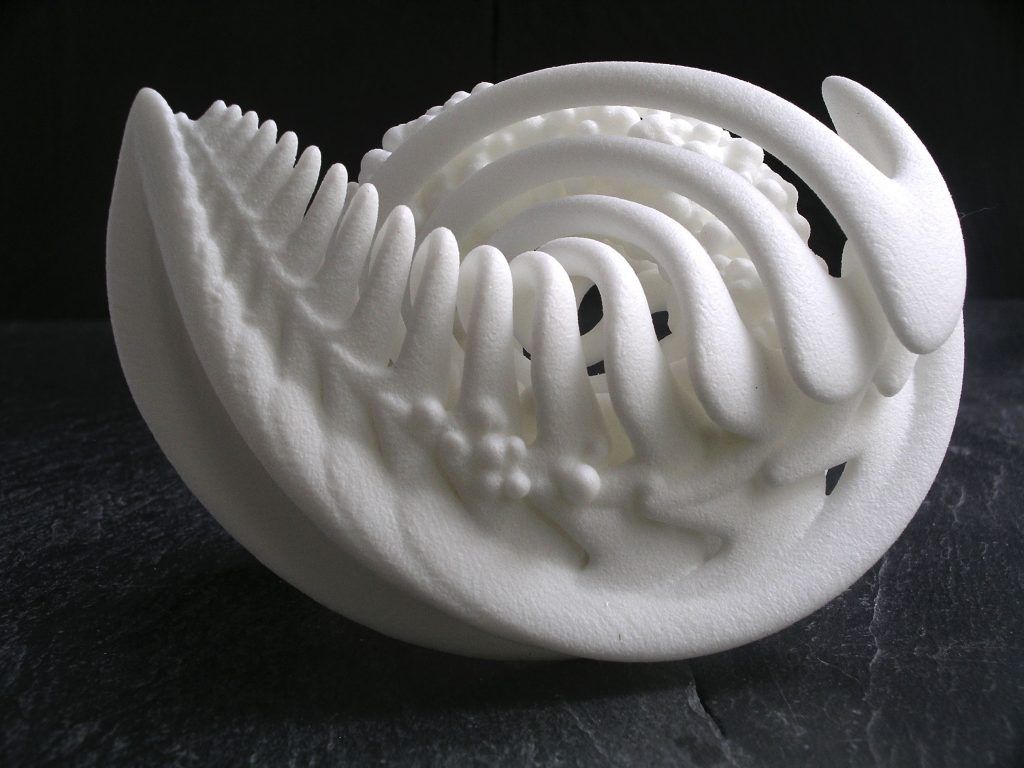
The main advantages and limitations that are common to all resins in SLA 3D printing are:
Benefits:
Weaknesses:
Base Resins for SLA
Post-Processing SLA/DLP 3D Printing Article
Standard photopolymer resin - Standard
Standard resins produce parts with high stiffness, detail and a smooth surface. The low cost of resins, from $250 per liter, makes them ideal for prototypes.
The color of the resin also affects its properties. For example, in FormLabs products, gray resin is suitable for models with fine details, and white resin for parts that require the smoothest possible surface.
Benefits of using Standard grade resins:
Cons Standard:
Also included in the class of "Standard" photopolymer resins from FormLabs is the Color KIT - a set of special dyes and "Color Base" photopolymer resin for mixing and obtaining a variety of color solutions.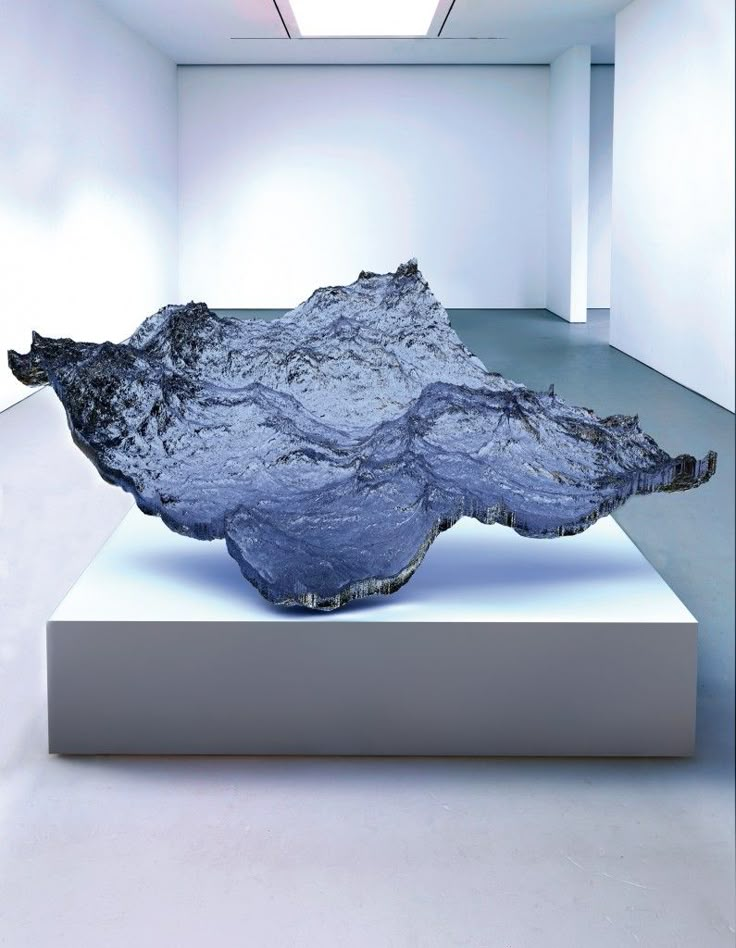 This eliminates the need for painting parts after 3D printing.
This eliminates the need for painting parts after 3D printing.
FormLabs Engineering Photopolymer Resins
Engineering resins have a range of properties for injection molded plastics.
All engineering resins require additional UV curing, such as using the Form Cure, to achieve their maximum properties.
Tough photopolymer resin - Tough (ABS equivalent)
Tough resin was developed for models that need to withstand high loads and be durable.
This material produces strong, shatter-resistant parts and functional prototypes such as snap-on housings.
Pros:
Cons:
Ideal for: functional prototypes, mechanical parts
Durable photopolymer resin - Durable
Durable resin is a wear-resistant and flexible material with mechanical properties similar to polypropylene.
Durable photopolymer produces models with a smooth glossy surface and high resistance to deformation.
Durable Resin is ideal for:
- Bushings and bearings;
- Various functional compounds
Pros:
Cons:
-
Not suitable for thin wall parts (recommended minimum wall thickness 1mm)
-
Low heat distortion temperature
-
Low flexural strength (lower than hard resin)
Ideal for: functional prototypes.
Refractory Photopolymer Resin - Formlabs High Temp Resin
The heat resistant resin is ideal for parts that require high temperature resistance and operate at high temperatures.
Formlabs High Temp Resin provides the highest melting point (HDT): 238°C at 0.45 MPa.
The resin should be used to print detailed, accurate prototypes with high heat resistance.
Pros:
Cons:
Flexible Resin
Rubber-like resin allows flexible parts to be made. This material has a low tensile strength and high elongation at break and is well suited for parts that will be bent or compressed.
It can also be used to add ergonomic features to multi-material assemblies such as: dies, wearable prototypes, handles, pads and grips.
Pros:
-
High flexibility (high elongation at break)
-
Low hardness (simulates 80A durometer rubber)
-
High impact resistance
Cons:
-
Doesn't have all the properties of real rubber
-
Requires extensive support structures
-
Material properties deteriorate over time as the part is exposed to ultraviolet radiation (sunlight)
-
Not suitable for thin wall parts (recommended minimum wall thickness 1mm)
Ideal for flexible prototyping.
Ceramic photopolymer resin - Rigid Resin
This resin is reinforced with glass, which provides very high rigidity and a polished surface. The polymer is very resistant to deformation and is excellent for 3D printing thin elements.
Ideal for: molds and tooling, jigs, manifolds, retainers, electrical and automotive fixture housings
Thermal management components printed with SLA ceramic (hard) resin. Image credit: Formlabs
How to choose the right resin for your application
The table below shows the main mechanical properties of photopolymers for SLA:
Source: Formlabs
Standard resin ( standart ) has high tensile strength but is very brittle (very low elongation at break) so it is not suitable for functional parts. The ability to create a good part surface makes it ideal for visual prototypes and art models.
Durable ( durable ) resin has the highest impact strength and elongation at break of any other SLA material. Best suited for prototyping parts with moving parts and latches. It lacks, however, the strength of thermoplastic 3D printing materials such as SLA nylon.
tough tough resin is a compromise between the material properties of tough and standard resin. It has a high tensile strength, so it is best suited for rigid parts that require high hardness.
heat resistant resin ( heat resistant ) can withstand temperatures above 200 o C, but has poor impact strength and is even more brittle than standard resin.
ceramic ( ceramic reinforce ) resin has the highest tensile strength and flexural modulus, but is brittle (poor elongation at break and toughness). This resin is preferred for thin wall parts that require increased rigidity.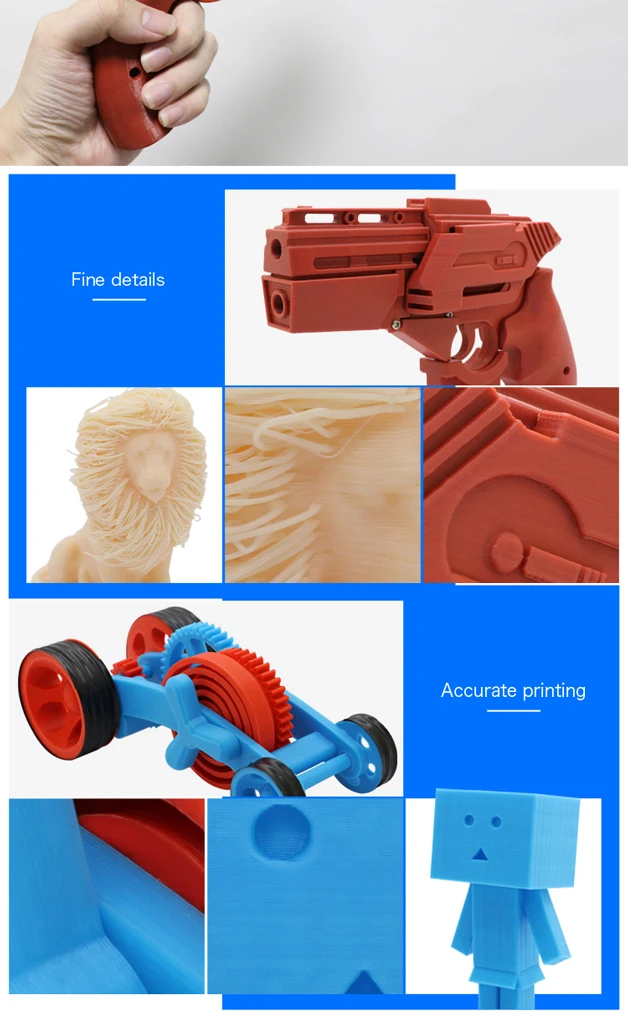
The graphs below compare the mechanical properties of the most common SLA materials visually:
Comparison chart for elongation at break and toughness for common SLA printing specifications and standard media. Image courtesy of Formlabs.
Stress-strain curves for conventional SLA technologies and standard materials. Image credit: Formlabs
Pros:
Cons:
- Moderate wear and tear resistance
Ideal for: Surgical aids and appliances
Dental Long Term Biocompatible Resin - Dental Long Term (Class 2A biocompatible)
0114
These resins are specially formulated for long term dental fixtures. Class 2A biocompatible resins can come into contact with the human body for up to a year.
High resistance to breakage and wear make this resin ideal for making rigid cotter pins or retainers.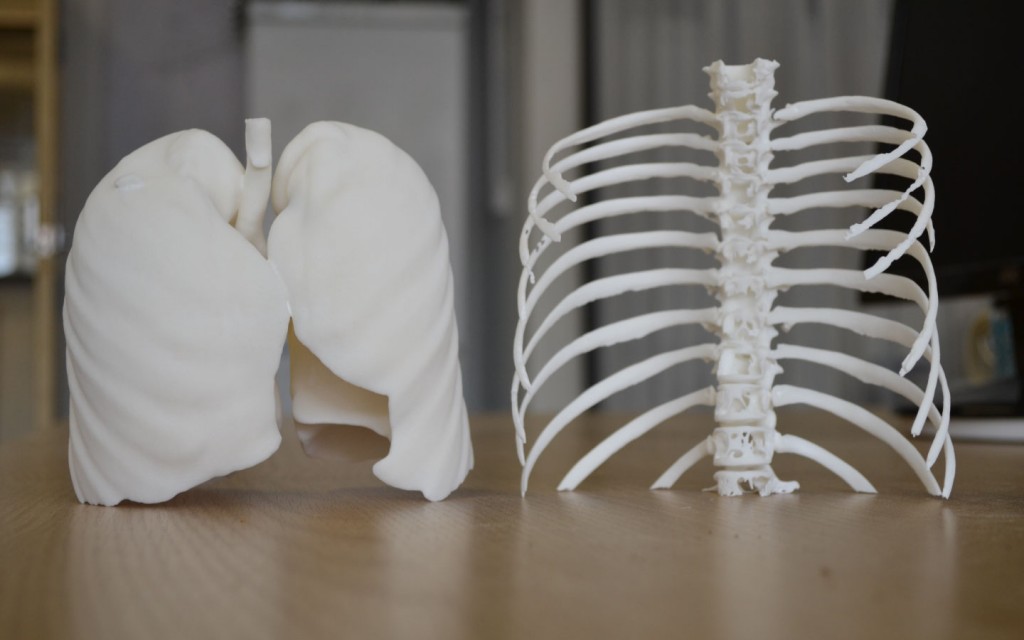
Pros:
Cons:
-
High price
Ideal for: durable dental instruments, fracture and wear resistant medical parts, rigid cotter pins, retainers
What is the difference between class 1 and class 2a biocompatibility?
Class 1 biocompatibility rules apply to materials that are allowed to be used for:
-
non-invasive devices that come into contact with intact skin
-
devices for temporary use or short-term use in the mouth or ear canal or in the nasal cavity
-
reusable surgical instruments
Class 2a biocompatibility rules apply to materials that are allowed to be used for:
-
devices that come into contact with bodily fluids or open wounds
-
devices used to introduce substances into or remove substances from the human body
-
invasive short-term devices such as invasive surgical items
-
long-term implantable devices placed in the teeth
Photopolymer resins in SLA 3D printing for jewelers
Jewelry resins
This material allows you to print models with fine details and a smooth surface without leaving ash or residue after burning.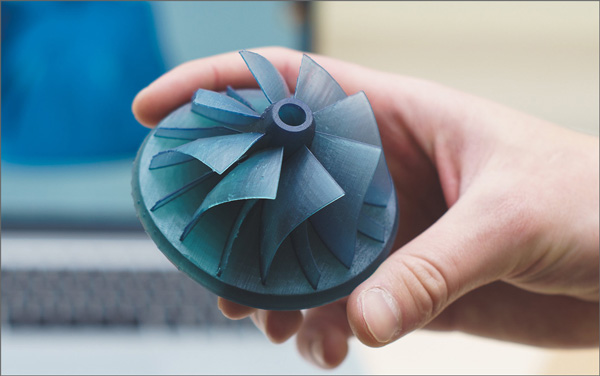
Cast resin allows you to get the finished product directly from design to precision casting with just one 3D printed part. It is suitable for making jewelry and other small and complex components.
Pros:
Cons:
Ideal for: investment casting, jewelry making
SLA/DLP 3D printer catalog
Photopolymers from FormLabs
Post-Processing SLA/DLP 3D Printing Article
Well, that's all we have! We hope this article was useful for you!
You can order Formlabs SLA 3D printers or ask your questions and find out the status of your order, you can
- Email: [email protected]
- By phone: 8(800)775-86-69
- Or on our website: http://3dtool.ru
-
Don't forget to subscribe to our YouTube channel:
Subscribe to our groups in social networks:
In contact with
Choosing the best 3D printer for printing miniatures
3DPrintStory Reviews Choosing the best 3D printer for printing miniatures
The use of 3D printers for printing game miniatures is gaining more and more popularity today.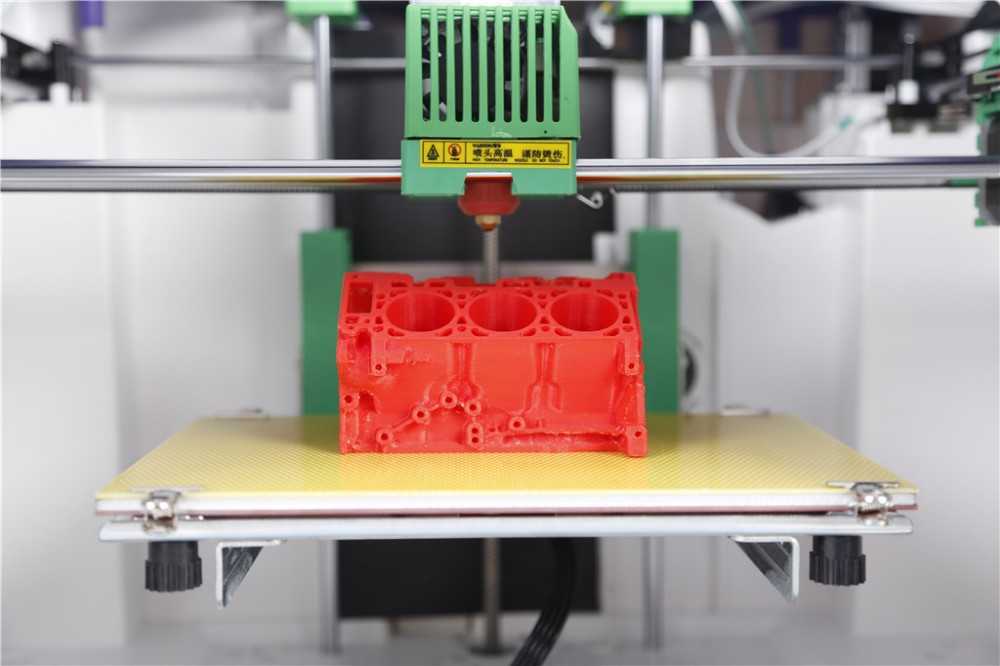 As the price of 3D printers continues to fall, it is likely that the demand for 3D printed game miniatures will only continue to rise.
As the price of 3D printers continues to fall, it is likely that the demand for 3D printed game miniatures will only continue to rise.
If you pick the right 3D printer, you can get amazing 3D models for your board games or to put an inspirational figurine from your favorite game on your desktop.
Today's desktop 3D printers have become reliable, easy to use and provide decent quality finished products.
How to choose a 3D miniature printer?
There is a wide range of desktop 3D printers that can be used to print miniatures in 3D at home. And if you study the market a bit, or at least the options below, you can get great detailed 3D models.
With the right 3D printer, you can print your own figurines and even create your own board games.
If you don't want to design 3D models of figurines from scratch (and this will really require some skills and time from you), then you can find interesting 3D models on sites with free 3D printable models.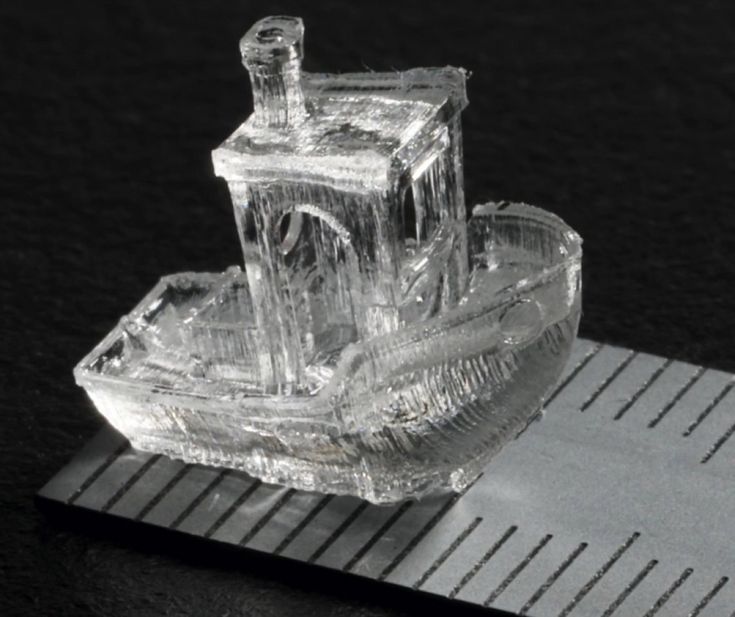 After downloading the model, you can immediately print it or edit it before 3D printing for your own needs. We also recommend that you familiarize yourself with interesting 3D models from Dutchmogul. Perhaps in his wonderful collection you will find something interesting for yourself.
After downloading the model, you can immediately print it or edit it before 3D printing for your own needs. We also recommend that you familiarize yourself with interesting 3D models from Dutchmogul. Perhaps in his wonderful collection you will find something interesting for yourself.
To get the same level of detail as the thumbnails above, your 3D printer must meet certain criteria. The most important feature of a 3D printer to consider is the level of detail it can reproduce. This criterion is formed based on the following parameters:
Nozzle diameter
To create a 3D miniature, heated plastic is extruded through a hole. Orifice is the diameter of the nozzle. Make sure the 3D printer nozzle size is less than 0.4mm.
XY Movement Accuracy
The X and Y axis movement accuracy of the 3D printer head should be taken into account. To get a more detailed model, you need to reduce the layer thickness. However, the low thickness means that 3D printing will take longer.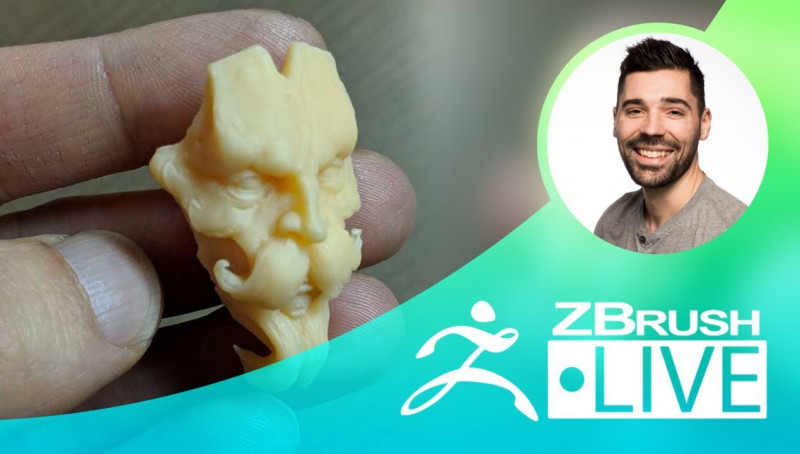 In order to print a detailed miniature, you will most likely need a 3D printer that can print with layer thicknesses of 100 microns (0.1 mm) or less.
In order to print a detailed miniature, you will most likely need a 3D printer that can print with layer thicknesses of 100 microns (0.1 mm) or less.
Material type
The most common materials used in 3D printers are ABS or PLA. To get a good surface, after 3D printing, it should be post-processed. If you are using ABS plastic, you can sand the miniature and steam it in acetone to get a smooth surface. It is also worth paying attention to PETG plastics, which are gaining more and more attention and positive user reviews.
Thumbnail size (scale)
If you want to start 3D printing game miniatures, think about the size you would like to get.
A 28 mm (scale ~ 1:58) or 54 mm (scale ~ 1:32) miniature can be made with a standard desktop 3D printer that melts plastic filament. To make a smaller miniature, you will need an SLA Resin printer, which uses liquid resin and strengthens it.
In addition to the figurine, you can also print larger models. 3D printing large models such as houses, huts, castles, trees, and tanks will require more expensive 3D printers that provide faster speeds with good 3D print quality. But there is an important point in the choice. It is better to choose high-quality 3D printing than a large one. You can always separate larger models for printing and then join them together using the same adhesive. The result will be much better than lower quality 3D printing on a 3D printer with a large workspace.
3D printing large models such as houses, huts, castles, trees, and tanks will require more expensive 3D printers that provide faster speeds with good 3D print quality. But there is an important point in the choice. It is better to choose high-quality 3D printing than a large one. You can always separate larger models for printing and then join them together using the same adhesive. The result will be much better than lower quality 3D printing on a 3D printer with a large workspace.
HICTOP CR-10S 3D printer
Value for money, the Hictop CR-10S is one of the best and most affordable budget 3D printers on the market. The Prusa i3 3D printer was taken as the basis for the design.
The Hictop printer uses quality materials for the power supply, motherboard and motion control systems. The metal framework is a rigid and strong design.
The Hictop printer will arrive unassembled, but assembly is easy. You will have to essentially screw in four bolts and connect the necessary wires. That is, you can proceed directly to 3D printing almost immediately after purchase.
That is, you can proceed directly to 3D printing almost immediately after purchase.
The "S" at the end of the CR-10S stands for two Z-axis lead screws and stepper motors.
Dual axis system improves extruder movement accuracy. As a result, you naturally get more accurate 3D printing overall. This is an excellent inexpensive 3D printer that is suitable for 3D printing miniatures and figurines for board games.
The Hictop 3D printer has a mechanism to control the remaining amount of plastic. If the plastic runs out, the printer will go into pause mode and after feeding new material, you can continue printing from the area where you left off. This is a particularly relevant feature for printing large-scale 3D models.
These 3D printers are quite popular, so you will find a lot of information and tips on how to use them online. In addition, thanks to an active community, the Hictop CR-10S has a large number of modifications and upgrades that you can implement yourself and improve its already decent 3D printing quality.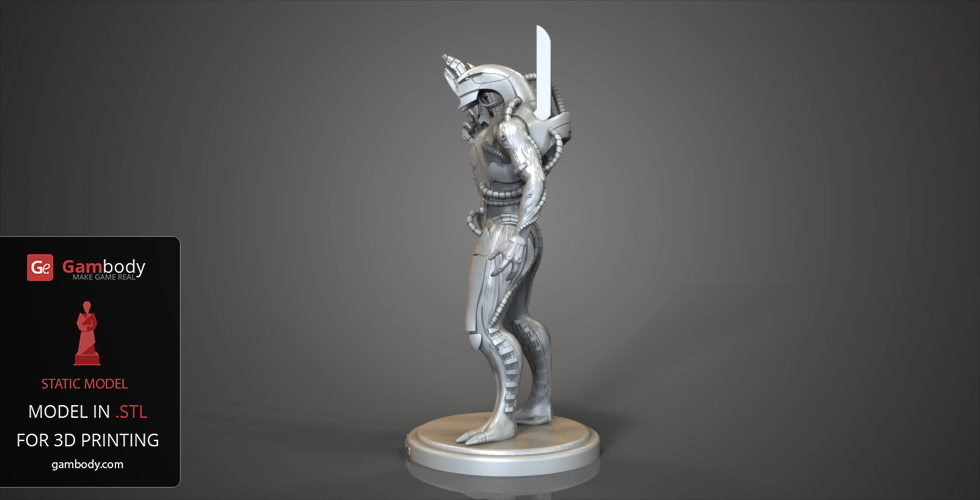
Hictop CR-10S is a high-quality and affordable 3D printer that is definitely suitable for 3D printing miniatures and figures of characters from your favorite games or movies.
FLASHFORGE CREATOR PRO 3D printer
FlashForge 3D Printer Creator Pro took inspiration from Makerbot Replica.
A nice feature of the FlashForge 3D printer is that it includes all the custom enhancements from Makerbot. These improvements include:
- Metal worktable supports. Thus, the working table became more stable during heating and assembling.
- Plastic-coated knobs for easy workbench calibration.
- The Central Processing Unit (CPU) supports Sailfish firmware which allows automatic calibration. In addition, the CPU helps regulate heat and delivers higher quality 3D prints.
The above features make the Creator Pro an excellent miniature 3D printer.
In addition, this 3D printer is made in a closed case, which allows you to print ABS plastic with much less difficulty.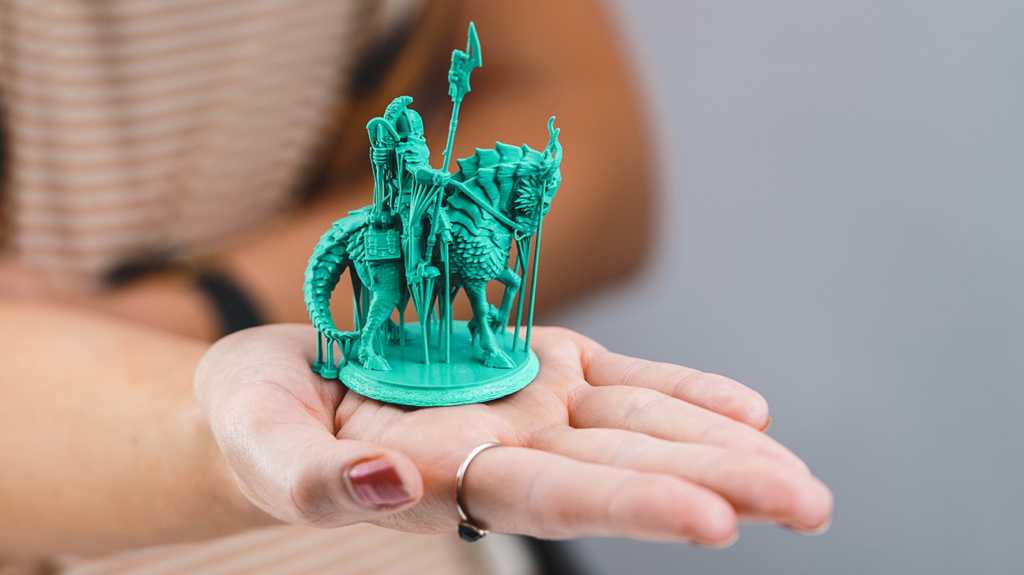
With Creator Pro, you can print two colors of media at the same time. If you plan to paint the finished model in the future, then you don’t really need this feature, but in general it gives you much more options than the standard analogues with one extruder.
Since the Creator Pro is based on the Makerbot Replica, there is a lot of information available on the Internet about this 3D printer.
3D printer SINDOH DP200 3DWOX
If you are looking for a reliable 3D printer for printing miniatures, then you should pay attention to Sindoh DP200 3DWOX. This is the best choice if you want to make 3D mini figures.
This 3D printer is easy to use, suitable even for beginners in the world of 3D printing. Below are some of its features:
- 3D printing table covered with aluminum PTFE.
- 3D printing resolution is 50 microns (0.05 mm).
- Equipped with a high efficiency particulate air filter and a closed chamber for 3D printing, which is especially good when using ABS plastics.

- Easy to use material cartridge chamber.
- Sindoh excels at printing minifigures in high detail.
One of the disadvantages of the Sindoh DP200 printer is that it can only use manufacturer's filament. Consequently, you will pay more money for cartridges because you will not be able to use materials from other manufacturers. The price of these cartridges, of course, is higher than analogues.
Otherwise, the Sindoh DP200 3DWOX 3D printer is a great option for high quality 3D printing of detailed models.
DREMEL DIGILAB 3D printer
The use of SLA technology for 3D printing helps to obtain miniature products of very high quality. SLA also helps print miniature parts as small as 28mm. The price of this wonderful 3D printer is comparable to the cost of a laptop.
SLA printing differs from FFF printing in the very essence of the processes. During SLA 3D printing, liquid resin is baked using a UV laser. The formation of the part looks like a gradual lifting of the finished model and a bath with liquid material.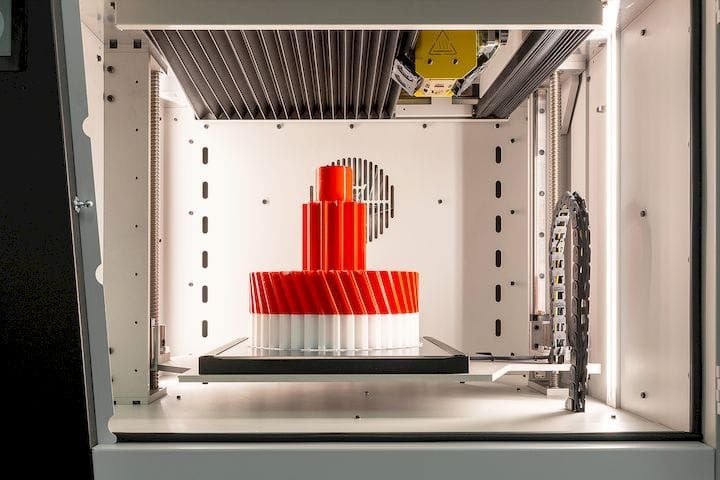
Industry-intensive stereolithographic 3D printers are now available at home! The Dremel Digilab 3D printer has proven itself as a hobby printer, which differs from expensive industrial analogues in its exceptionally smaller workspace.
Key features of the Dremel Digilab 3D printer:
- The minimum wall thickness of the 3D model is 25 microns (0.025mm).
- Faster 3D printing compared to FFF 3D printers.
- Excellent surface quality of the finished 3D model.
Digilab is a great SLA 3D printer. It is easy to use and, according to user reviews, reliable.
With this 3D printer, you can use resins to make investment casting molds. It can also be used to make jewelry by casting metals.
Some disadvantages of using SLA for 3D printing:
- It's expensive. The resin needs to be updated, as over time it ages and loses the necessary properties.
- Resins require maintenance. Make sure you start 3D printing only after the balloons created by adding resin to the tank are gone.

Learn more


